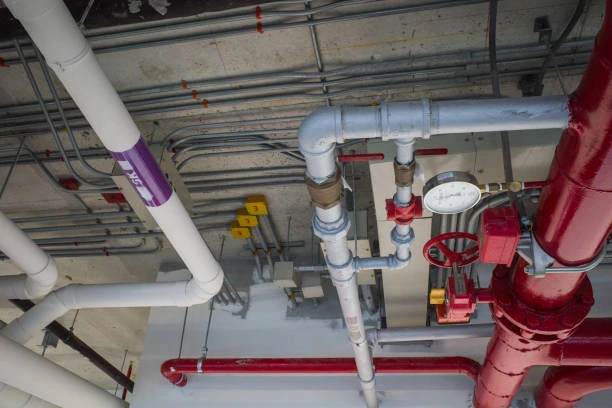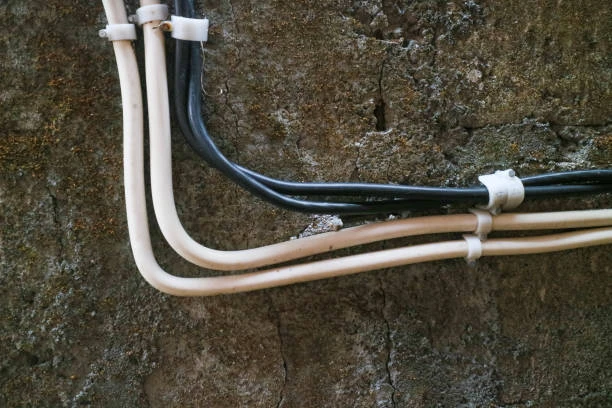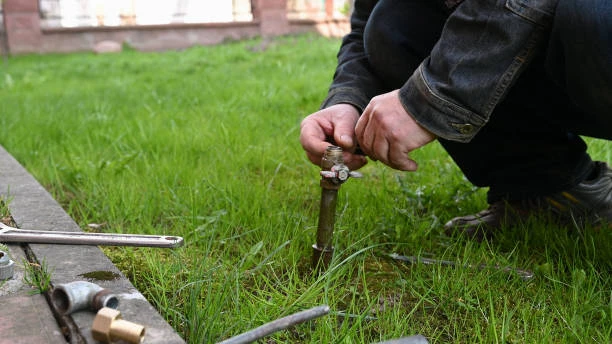Introduction: Managing Reactive Media with Copper Ball Valves
Ethylene is a vital raw material in the petrochemical industry, serving as the foundation for producing plastics, antifreeze, detergents, and more. Its handling, however, demands a high level of safety and precision, especially in terms of controlling media flow under high pressure and varying temperatures. In these critical applications, copper ball valves play a key role by offering reliable medium control, corrosion resistance, and mechanical strength. While directional control valve hydraulic systems are often used in dynamic fluid regulation, copper ball valves offer stability and shut-off control, especially in static or semi-static ethylene production processes. This article provides an in-depth look into the characteristics, applications, and best practices for using copper ball valves in ethylene systems.
Frequently Asked Questions (FAQ)
1. Can copper ball valves be used in ethylene production lines?
Yes, copper and brass ball valves are commonly used in ethylene processes, especially for non-cryogenic phases, provided the material compatibility is verified against hydrocarbons.
2. What’s the difference between a copper ball valve and a directional control valve hydraulic system?
Copper ball valves provide simple on/off control. In contrast, a directional control valve hydraulic system actively regulates flow direction and volume in complex circuits. Both can be complementary in process control.
3. Are copper ball valves resistant to hydrocarbon corrosion?
Yes, copper and especially brass alloys offer good resistance to hydrocarbons, but should not be used in systems where sulphur compounds are present without protective coatings.
4. Do copper valves work well under high pressure?
Standard copper ball valves can handle pressures up to 40 bar, making them suitable for many industrial pipelines, including those involving pressurised ethylene.
5. How often should copper ball valves be serviced in ethylene production?
Service intervals depend on pressure, temperature, and frequency of use. However, a general inspection every 6 to 12 months is recommended in active pipelines.
Copper Ball Valves: Definition and Core Features
A copper ball valve is a mechanical device used to control the flow of fluids or gases by rotating a perforated ball within a valve body. When the ball’s hole aligns with the pipe, flow continues; when turned 90 degrees, the flow is blocked.
Key Features:
Material Composition: Typically made of brass or bronze (copper alloys), offering high corrosion resistance and mechanical strength.
Compact Design: Allows easy installation even in tight spaces.
Quarter-Turn Operation: Enables quick shut-off or opening with minimal effort.
Thermal Resistance: Operates effectively in temperatures up to 120°C.
Minimal Flow Restriction: Especially in full-port designs, where internal bore matches pipe diameter.
These valves are ideal for applications requiring rapid shut-off, pressure sealing, or flow isolation, including those found in directional control valve hydraulic systems.
Applications: Where Copper Ball Valves Meet Ethylene
Copper ball valves are widely used in the petrochemical industry due to their performance under pressure and exposure to hydrocarbons. In ethylene production, these valves are used in various supporting and processing lines.
Typical Use Cases:
Gas Phase Isolation: For controlling gas feeds and purge lines in the ethylene cracking process.
Cooling Water Circuits: To manage flow in reactor cooling systems.
Metering Skids: For precise on/off control in measurement units.
Maintenance Bypass Lines: To allow safe equipment shutdown and pressure release.
Emergency Shutdown Systems: Where rapid closure is necessary in case of leaks or pressure surges.
In many of these applications, ball valves are paired with directional control valve hydraulic systems that handle dynamic flow redirection, with copper valves offering reliable static isolation.
Buying Guide: Choosing the Right Copper Ball Valve
When selecting copper ball valves for use in ethylene or hydrocarbon service, you must consider multiple technical and safety aspects.
Key Considerations:
Material and Alloy Type
Choose valves made from DZR brass (dezincification-resistant brass) to enhance durability and resist corrosion from trace chemicals.Valve Bore Size
Use full-bore valves where minimal pressure drop is essential. Reduced bore valves are acceptable for minor flow regulation tasks.Sealing Type
PTFE seals are ideal for hydrocarbons due to their chemical resistance and thermal stability.Pressure Rating
Confirm the maximum working pressure matches your application needs, generally 16–40 bar for industrial valves.Handle Identification
Colour-coded handles (often red or blue) can help quickly identify valve purpose, especially in multi-line systems.Certifications
Ensure the valve meets standards such as ISO 9001, EN 13828, or ANSI B16.33, which verify safety and quality.Compatibility with Directional Flow Systems
If the valve integrates with a directional control valve hydraulic setup, confirm it allows for isolated branch control without leakage.
Installation Guidelines: Getting It Right the First Time
Proper installation is critical to ensure the valve’s reliability, especially in high-pressure ethylene lines where any failure could pose safety risks.
Best Practices:
Clean Piping
Remove debris, welding slag, and oils from the piping system before installing the valve.Correct Orientation
Install with the handle accessible for emergency shut-off, and ensure flow direction matches the marking (if present).Avoid Over-Tightening
Excessive torque can damage threads and compromise sealing.Use Thread Sealants Carefully
Avoid overuse of PTFE tape or liquid sealants, which can migrate into the valve mechanism.Pressure Testing
Always test the system at operating pressure before commissioning to confirm sealing performance.Environmental Factors
If used outdoors or in corrosive zones, consider protective coatings or covers for extended durability.
These precautions help ensure smooth operation and long service life, especially in critical systems involving directional control valve hydraulic integration.
Comparison: Copper Ball Valve vs Plastic Valve
| Feature | Copper Ball Valve | Plastic Valve |
|---|---|---|
| Pressure Resistance | High (up to 40 bar) | Moderate (usually 6–16 bar) |
| Temperature Tolerance | Up to 120°C | Limited (generally below 60–80°C) |
| Compatibility with Hydrocarbons | Excellent (with proper alloy) | Variable; may degrade depending on chemical |
| Lifespan | Long, especially in industrial settings | Shorter in harsh environments |
| Cost | Moderate | Lower initial cost |
| Installation Strength | Rigid and secure | Can be prone to cracking or stress failure |
| Maintenance | Low | Moderate to high depending on material type |
From this comparison, copper ball valves clearly stand out for high-stress, chemically active applications such as ethylene production. While plastic valves may be suitable for water systems or light-duty uses, they often fail in environments with hydrocarbons or high temperatures.
Conclusion: Why Copper Ball Valves Remain a Top Choice
In ethylene production and other hydrocarbon-based processes, precise medium control is essential. While directional control valve hydraulic systems offer advanced flow management, copper ball valves provide the fundamental reliability, shut-off accuracy, and chemical resistance necessary for base-level control.
Their durability, ease of installation, and compatibility with hydrocarbon gases make them a solid investment in any industrial pipeline. As long as proper material and sealing selections are made, copper ball valves will continue to be indispensable in managing reactive, high-pressure media like ethylene.
Connect
IFAN is a Chinese manufacturer with 30 years of experience in producing high-quality plastic and copper pipes, valves, and fittings. Whether you are designing a new ethylene production system or upgrading existing pipelines, IFAN offers a complete range of reliable and cost-effective solutions.
Interested in IFAN’s copper fittings, copper valves, or plastic piping products? Reach out today.
- For more information,pls visit our webside https://waterpipefitting.com/
Pls Mailto: [email protected]
Whatsapp: +86 15088288323
We guarantee a response within 24 hours and are available for technical consultations and international deliveries.
IFAN Products: Certified to International Standards
All IFAN products are manufactured in accordance with rigorous international standards, including:
ISO 15874, EN 15874, ASTM F2389, DIN 8077/8078, GB/T 18742, ISO 15494, ASTM D1785 SCH40/80, DIN 8061/8062, EN ISO 1452, AS/NZS 1477, CSA B137.3, JIS K6741, and many more.
IFAN ensures each product meets or exceeds global expectations for safety, performance, and durability—especially in complex applications such as ethylene production involving directional control valve hydraulic systems.














Recent Comments